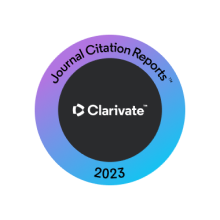Abstract
Objectives: This study aimed to assess the effect of the admission time (on-hours versus off-hours) on in-hospital mortality in patients with ST-elevation myocardial infarction (STEMI) treated with primary percutaneous coronary intervention (PPCI) in a region without STEMI network.
Methods: We analysed in-hospital the mortality among 300 consecutive ST-segment elevation myocardial infarction (STEMI) patients treated with PPCI between March 2012 and February 2017. Patients were divided according to admission time into on-hours admission (08:00 AM until 08:00 PM on weekdays) versus off-hours admission (08:00 PM until 08:00 AM on weekdays and 24 h on weekends and holidays). Demographic and clinical data as well as in-hospital mortality were compared between the two groups.
Results: One hundred and seventy eight (59.3%) patients were admitted during on-hours, and 122 (40.7%) patients were presented in off-hours. The mean door-to-balloon time was 42.3 min in the off-hours group and 34.2 min in the on-hours group with no statistically significant difference (p=0.39). The mortality rate was 3.9% at on-hours presentation versus 4.09% in off-hours admission (p=0.58). Multivariate logistic regression analysis showed that off-hours presentation was not associated with in-hospital mortality. [odds ratio (OR) 0.74; 95% CI, 0.21–2.61, p = 0.64].
Conclusion: Despite no efficient STEMI network in present study, off-hour presentation had no significant impact on in-hospital prognosis in patients with STEMI treated with PPCI. Larger studies are warranted in order to determine the prognostic role of off-hour presentation in patients with STEMI undergoing PPCI.
Recommended Citation
Javanshir, Elnaz; Ramandi, Elham Darzi; Ghaffari, Samad; Nasiri, Babak; Bodagh, Haleh; Davarmoin, Ghiti; Aslanabadi, Naser; and Separham, Ahmad
(2020)
"Association Between Off-Hour Presentations And In-Hospital Mortality For Patients With Acute ST-Elevation Myocardial Infarction Treated With Primary Percutaneous Coronary Intervention,"
Journal of the Saudi Heart Association: Vol. 32
:
Iss.
2
, Article 16.
Available at: https://doi.org/10.37616/2212-5043.1059
Creative Commons License

This work is licensed under a Creative Commons Attribution-Noncommercial-No Derivative Works 4.0 License.




